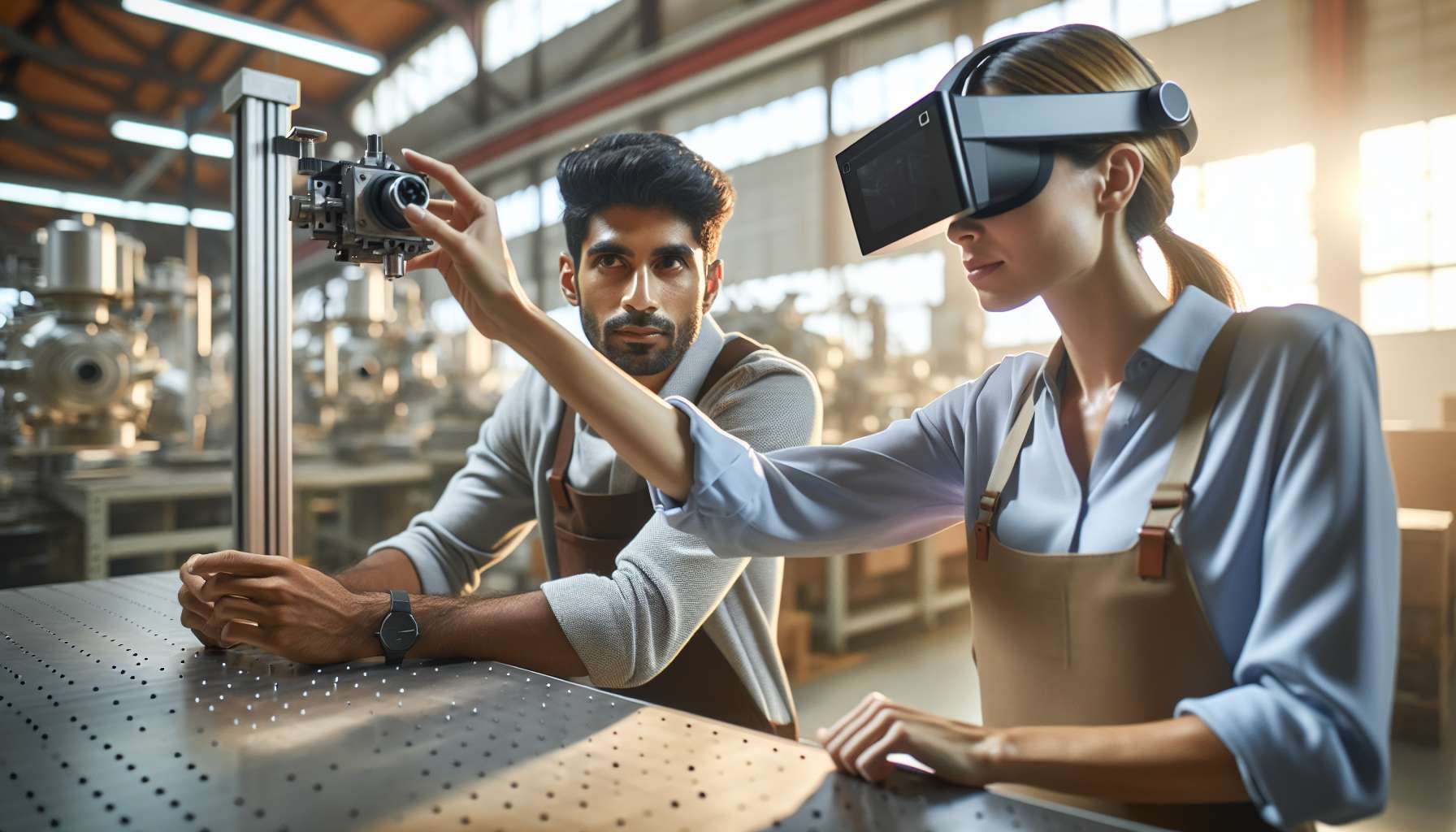The Future of Manufacturing: Integrating AR for Enhanced Precision and Visualization
As technology continues to advance at an unprecedented pace, industries across the board are embracing the potential of augmented reality (AR) to revolutionize their operations. One sector that stands to benefit greatly from this cutting-edge technology is manufacturing. By integrating AR into their processes, manufacturers can achieve enhanced precision and visualization, leading to improved productivity, reduced errors, and increased efficiency.
Enhancing Precision with AR
One of the key advantages of AR in manufacturing is its ability to enhance precision. Traditional manufacturing processes often rely on manual measurements and visual inspections, which can be prone to human error. However, by overlaying digital information onto the physical world, AR enables workers to accurately position and align components, reducing the risk of mistakes.
For example, imagine a scenario where a worker needs to assemble a complex piece of machinery. With AR, they can wear a headset or use a mobile device to see virtual instructions and diagrams superimposed onto the real-world object. This real-time guidance ensures that each step is performed with utmost precision, resulting in a higher quality end product.
Visualizing Complex Processes
Another significant benefit of AR in manufacturing is its ability to visualize complex processes. Manufacturing often involves intricate machinery and intricate assembly procedures, making it challenging for workers to understand and follow instructions accurately. AR can simplify these processes by providing step-by-step visual guidance.
By using AR, workers can see virtual representations of components, animations of assembly sequences, and even real-time data overlays. This visual aid not only improves comprehension but also reduces the learning curve for new employees. With AR, manufacturers can streamline training processes and ensure consistent quality across their workforce.
Real-World Examples
AR is already making waves in the manufacturing industry, with several notable success stories. One such example is Boeing, the renowned aircraft manufacturer. They have been using AR to assist their technicians in wiring harness assembly. By projecting digital images onto physical wire harnesses, technicians can easily identify the correct wires and connectors, significantly reducing assembly time and errors.
Another example comes from Volkswagen, who has implemented AR in their production lines. By equipping their workers with AR glasses, they can visualize the exact placement of components during the assembly process. This has led to a 50% reduction in production time and a 90% decrease in errors.
The Future Outlook
The future of AR in manufacturing looks incredibly promising. As the technology continues to evolve, we can expect even more advanced features and applications. For instance, AR could enable remote collaboration, allowing experts to guide workers in real-time from anywhere in the world. This would not only improve efficiency but also reduce travel costs and downtime.
Furthermore, as artificial intelligence (AI) continues to advance, AR can leverage AI algorithms to analyze real-time data and provide predictive insights. This could help manufacturers optimize their processes, identify potential issues before they occur, and make data-driven decisions for continuous improvement.
Conclusion
AR’s emerging role in future manufacturing holds immense potential for enhancing precision and visualization. By integrating AR into their operations, manufacturers can achieve higher levels of accuracy, streamline complex processes, and improve overall productivity. Real-world examples from industry leaders demonstrate the tangible benefits of AR in manufacturing. As the technology continues to evolve, the future outlook for AR in manufacturing is incredibly promising, with the potential for remote collaboration and AI integration. It’s clear that AR is set to revolutionize the manufacturing industry, and businesses that embrace this technology will gain a competitive edge in the market.





